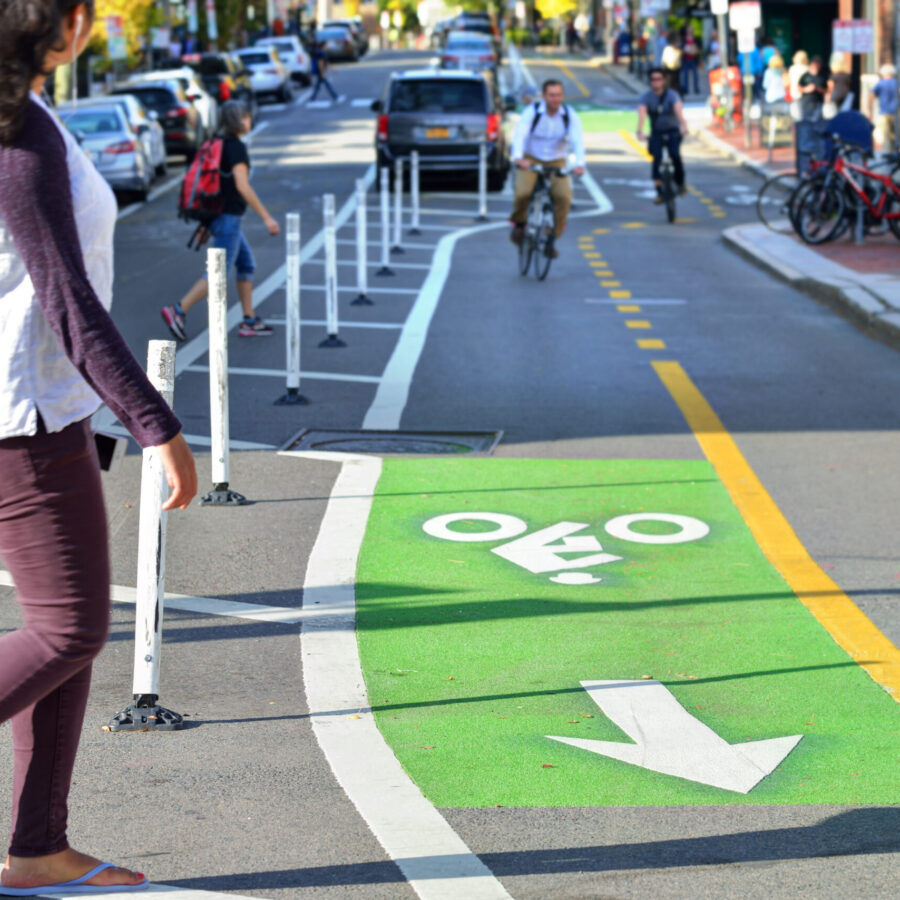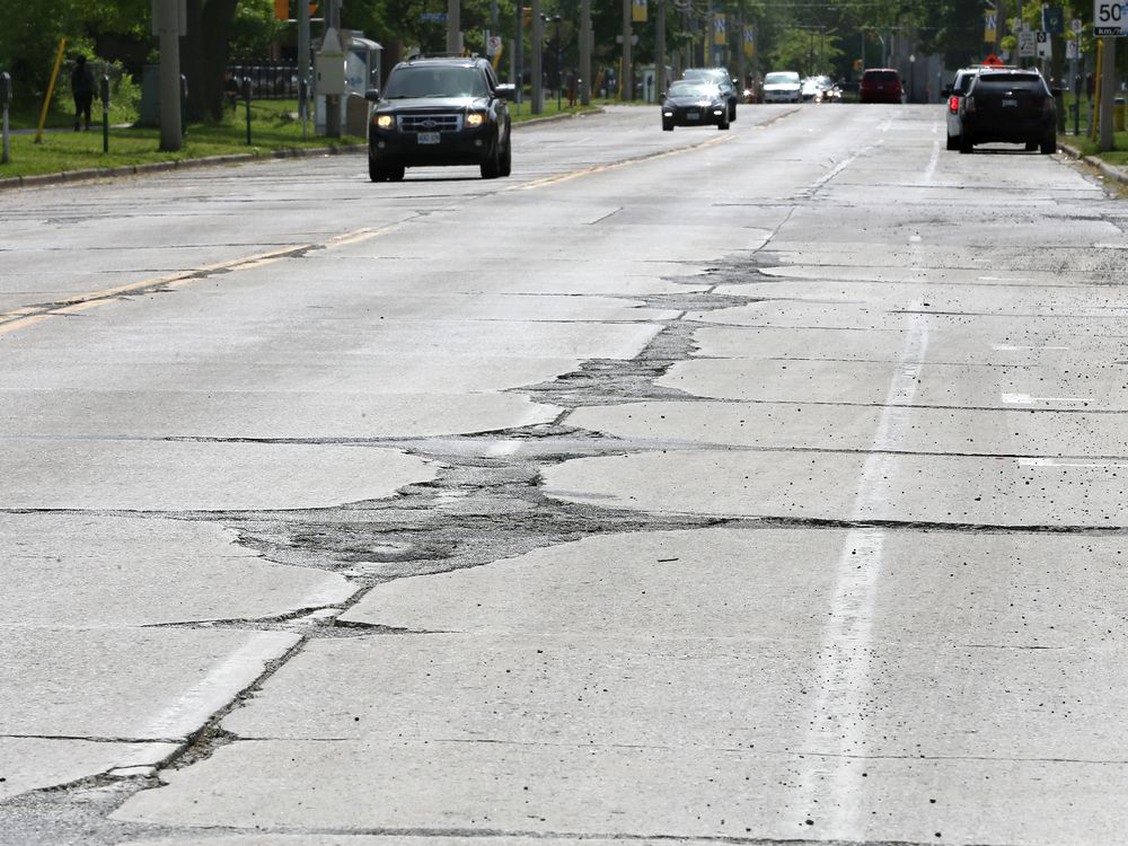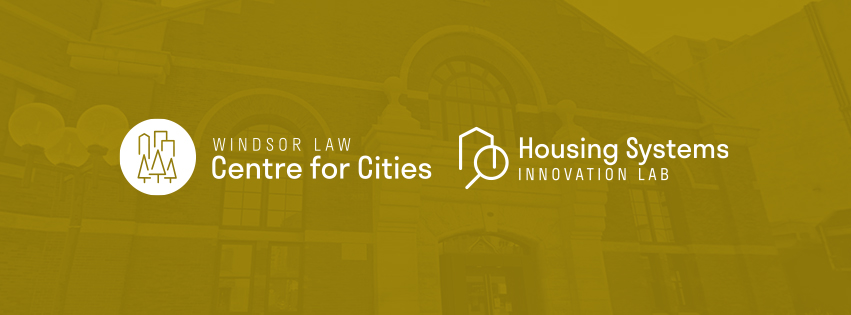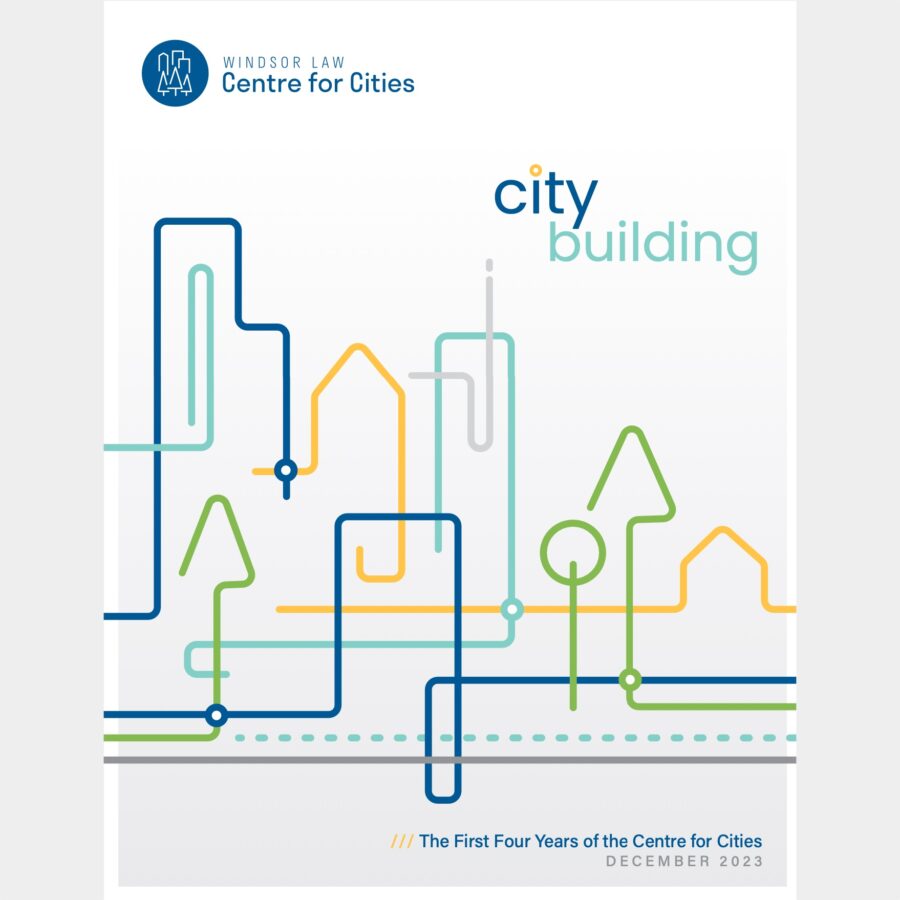
Climate Blog: Making Windsor Bike-Friendly – Climate, Health, and Economic Benefits of Increasing Cycling Infrastructure
(March 30, 2021) By Klaudia Grabkowska.
The presence of expansive cycling infrastructure in a city can significantly contribute to its success from climate, health, and economic perspectives.
In fact, the importance of cycling infrastructure to the City of Windsor has been recently recognized in Windsor Works – An Economic Development Strategy for the City’s Future Growth, as well as the City of Windsor’s Active Transportation Master Plan (ATMP).
Released in 2019, the ATMP was developed over an 18-month period through a public engagement process and with the input of thousands of community members. The ATMP addresses all aspects of active transportation and serves as a guide to achieving greater levels of active transportation – including cycling – over the next 20 years.
But at present, there are simply not enough bike lanes in Windsor. There are currently no protected bike lanes in the city, and the unprotected bike lanes that are available are often too short or disconnected. Cyclists are therefore consistently forced to choose between riding on busy roads or on sidewalks. Not only do these unsafe alternatives result in many preventable accidents each year, cycling on sidewalks is also illegal in Windsor and can result in a fine.
The municipality does not have to look very far to find a city working hard to expand its cycling network – just across the border, Detroit is setting a great example for Windsor to follow. In 2007, there were only roughly 21 kilometres of bike lanes in Detroit, and in 2019 that number grew to nearly 386 kilometers. Almost all of these bike lanes have been implemented in the last few years, and there many more still being built.
The reasons for expanding a city’s cycling infrastructure are almost endless – there are, quite literally, at least 101 benefits to cycling. The focus here will be to briefly explore three key benefits – climate, health, and economic – with the aim of encouraging greater and more urgent emphasis on cycling infrastructure in future budgeting and decision-making in the city.
Local Climate Action Benefits
In addition to the Climate Emergency Declaration adopted by Windsor in 2019, the city’s Community Energy Plan (CEP) released in 2017 announced Windsor’s target to reduce per capita greenhouse gas (GHG) emissions from 2014 levels by 40 percent by 2041. The CEP states that in the baseline year of 2014, 36 percent of the 1.9 million tonnes of GHG emissions produced by the Windsor community came from transportation.
A bicycle produces no GHG emissions, and a transportation “modal shift” from cars to bicycles is an important tool for municipalities seeking to reduce GHG emissions. Increasing cycling infrastructure might therefore be an important and cost-effective avenue for the city to reach its emissions reductions goal by 2041.
Such a proposition is supported by several studies. For instance, a study in Montreal showed a 2 percent reduction in GHG emissions following a 7 percent increase in the length of the city’s cycling network.
Health Benefits
There are significant benefits to both physical and mental health that come from cycling. Although some of these have long been well-known, many people experienced a newfound appreciation for these benefits during the recent COVID-19 lockdowns. Indeed, cities such as Toronto temporarily or permanently expanded their cycling networks through initiatives such as ActiveTO and increased bicycle sales caused a nation-wide shortage – including in Windsor.
It is important that cities like Windsor take advantage of this rediscovered enthusiasm for cycling. A 2016 study of the Windsor-Essex Health Unit (WECHU) reported that almost two-thirds of Windsor-Essex residents are overweight or obese. With more people now owning bicycles and embracing the positive impacts of cycling, it is crucial that proper infrastructure is provided to ensure that it remains a permanent part of their lifestyles.
Since bicycles are relatively inexpensive, having safer, lengthier, and better-connected bike lanes around key areas of the city also serves to achieve equitable transportation policy objectives and ensure better and more affordable transportation for all residents.
Economic Benefits

Lastly, there are the economic benefits of bike lanes. Expanding cycling infrastructure in a city has shown to boost retail sales. Although those who drive by car tend to spend more per trip, studies show that cyclists make more frequent trips and end up spending more on average, and more of that spending stays in the community.
Charles Gauthier, President and CEO of the Downtown Vancouver Business Improvement Association also stated that the safety of bike lanes attracts a greater diversity of cyclists. He says that “it is bringing in a different consumer that we may not have seen, who wouldn’t be comfortable riding a bike in downtown.”
Implementing bike lanes in and to areas with many businesses, such as Downtown Windsor and other business improvement areas (BIAs) can therefore prove to be a great way to increase consumer spending and improve the local economy.
Cycling infrastructure has been proven to encourage job creation in cycling-related industries.
A city’s cycling infrastructure has also been shown to improve talent attraction, since young people are increasingly attracted to cities where living without a car is possible. The property values of homes in proximity to bike lanes also tend to rise.
Lastly, it may be cheaper for a city to invest in cycling than not: a recent study by researchers at Simon Fraser University of three mid-sized Canadian cities – Halifax, Kelowna, and VIctoria – found that “the dollar value of health-related benefits exceeded the cost of planned [cycling] infrastructure investments”.

Cycling in Windsor
In many ways, Windsor is particularly well-suited to become a bike-friendly city.
Windsor has a relatively flat landscape and a generally mild climate – both favourable factors for cyclists.
Students represent a significant portion of Windsor’s community. It is important that University of Windsor students are able to safely commute between main campus and downtown (2.5 km). Even travel between the main and downtown St. Clair College campuses would be reasonable for bicycle travel with the right infrastructure in place.
Since rejuvenation of University Avenue is being planned, and because this street directly links the University’s main campus to downtown Windsor (including the UWindsor downtown campus), it is imperative that cycling infrastructure be incorporated into the budget and design of this plan.

Moving Forward
It is clear that increasing cycling infrastructure in Windsor can offer significant climate action, health, and economic benefits at the local level. To date, however, the issue has not been met with quite the urgency it deserves. Improving cycling infrastructure in Windsor is in line with the city’s climate emergency declaration, its Community Energy Plan, and the Windsor Works report.
It is therefore vital that efforts continue to be made in bringing this matter to the forefront. It should be our collective goal to transform the city to a cycling-friendly community, and to do so quickly. As a Windsor Law student anxiously awaiting a return to in-person studies in Windsor post-COVID, I hope to see bike lane progress for me and thousands of other students. Staffing and aggressively funding the Active Transportation Master Plan implementation process must be a priority.
Interested in Learning More?
For more information, please read the Centre for Active Transportation (TCAT)’s 2019 report, INCREASING CYCLING IN CANADA: A guide to what works.
Klaudia Grabkowska is a Windsor Law JD student and a student member of the Windsor Law Cities and Climate Action Forum (CCAF).
Opinions expressed in blog posts are those of the author and do not reflect an official position of the Windsor Law Centre for Cities or CCAF.
Main image credit: Shutterstock.



